Rectangles
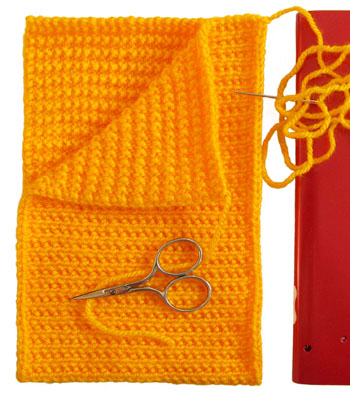
Anyone can knit a rectangle (well rectangle-ish anyway – most early efforts have a certain amount of wobble). Making rectangles of a specific size can be a little trickier, especially if the rectangle is large enough that trial and error is impractical.
1. Choose a Width, Height and Stitch
Every rectangle has a width (the measurement side to side) and a height (the measurement from top to bottom). We will always call the length of the cast on/off edge the width.
As an example we are going to make a simple pouch for an ebook reader. We will be using rice stitch on 2.75mm needles with double knit yarn.
The ebook reader is 185mm x 120mm. To make a symmetrical pouch we will need to knit a rectangle 370mm x 120mm (The ebook reader is very slim so we're not making any allowance for thickness - the knitting should stretch a little). We will cast on along the longest edge.
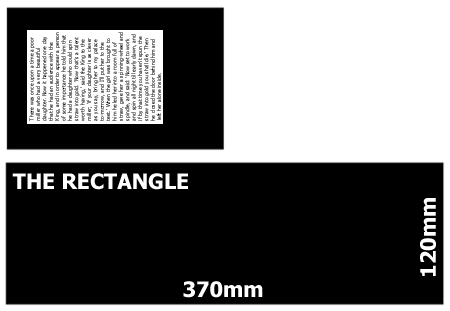
2. Find SH and SW
Find the stitch height (SH) and stitch width (SW) by following the instructions for making a tension patch. Be sure to use the same stitch, needles and yarn as you will use for your finished rectangle.
Rice Stitch, in double knit, on 2.75mm needles has SH = 2.3mm and SW = 3.4mm
3. Cast On
In the last step we found SW from the width (W) and number of cast on stitches (nW) of a rectangular tension patch using the equation...

We know that the three qualities will always be related in the same way. If we want to find out how many stitches to cast on to make a specific size of rectangle we rearrange the equation for nW and get...

...which tells us that the number of stitches we need to cast on for our rectangle is equal to the width of the rectangle divided by SW for the chosen stitch.
For our rice stitch rectangle W = 370mm and SW = 3.4mm.
nW = W ÷ SW = 370mm ÷ 3.4mm = 109
(Well, ok, the answer wasn't exactly 109 stitches but you have to round to the nearest whole number - there's no way to cast on half a stitch!)
To make the rice stitch rectangle, cast on 109 stitches.
4. Work the Stitch
Rice stitch is worked on a multiple of 2 + 1 stitches so it's lucky that we've been told to cast on an odd number. But what would we do if we were told to cast on a number that didn't match the repeat of our stitch pattern?
I. Change the Cast Ons
The simplest method is to cast on (or drop) the extra stitches. Unless your measurements need to be really precise dropping or adding a couple of stitches should only make a little difference to your rectangle size.
II. Make a Border
If you have an even number of extra cast-ons you can add a narrow border of plain stitches on either side of the rectangle. This has the added advantage of neatening the edge but you do have to remember to work the border on every line of knitting.
III. Off-Set the Stitch
If the previous methods would make too much difference to the rectangle size it is possible to off-set the stitch instead – i.e. work the pattern on a number of cast-ons it wasn't designed for.
(This method works best on stitches that do not have increases or decreases in them.)
- Count how many cast-ons you are short of a full repeat (N).
- Begin each odd row as the pattern instructs (you will finish N sts from the end of the written instructions).
- For each even row skip over the first N sts of the written pattern then work complete repeats as instructed (you will finish in sync with the instructions).
5. How Many Rows?
Now the temptation is to knit until a quick check against a ruler tells you the rectangle is the right height, but that's not the point of knitting with maths! We want to know exactly how many rows to work.
Just as the equation for SW could be rearranged to tell us how many stitches to cast on for a given width, the equation for SH can tell us the number of rows (nH) we need to work for a given height (H).
So if we take the equation for SH...
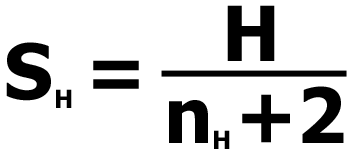
and rearrange it for nH, we get...
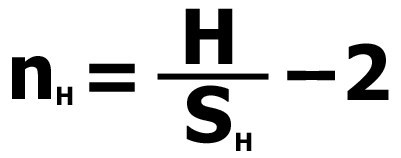
Which tells us that by dividing the height by the stitch height and subtracting two, we can find out how many rows to work.
(We subtract two in this formula to account for the cast on and cast off rows. We approximate each as being a single SH in height.)
For our rice stitch rectangle H = 120mm and SH = 2.3mm.
nH = H ÷ SH - 2 = 120mm ÷ 2.3mm - 2 = 50
(Again we round to the nearest whole number.)
To finish our rice stitch rectangle, we work 50 rows and cast off.
6. Check Your Measurements
Once you have completed your rectangle check its measurements against what you intended. Hopefully they'll match up.
Here's the ebook reader pouch we made, fitting snugly over our ebook reader. It fits! Hooray!
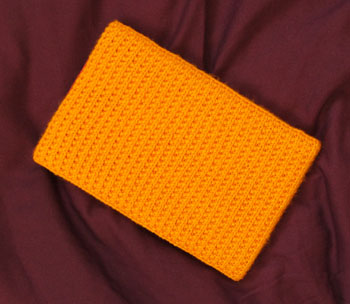
<<< Back to Shapes.
© 2011 All desgins and images are copyright of ODDknit.

